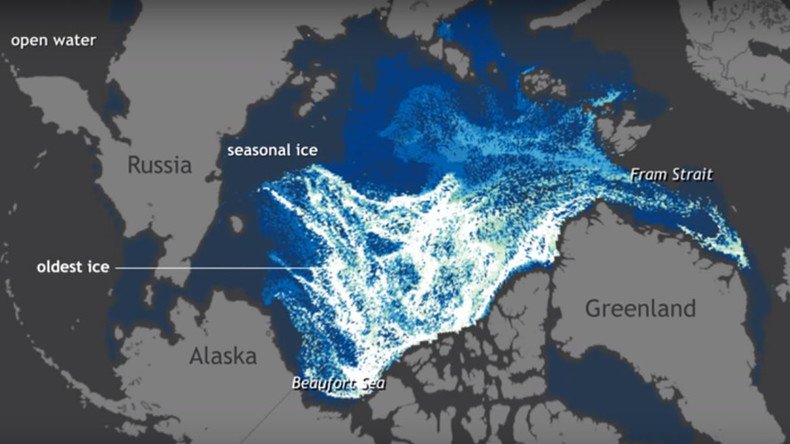25 years of Arctic ice melting in one minute (TIMELAPSE VIDEO)

Arctic Ocean ice levels are in decline and now a new time lapse by US scientists is showing how large ice packs which survive more than one summer are becoming less frequent occurrences.
Each year sea ice in the Arctic Ocean builds up in the winter months and thin ice melts away during summer.
However, old, multilayered icebergs are in decline and this visualization by the National Oceanic and Atmospheric Administration (NOAA) gives some indication as to how the Arctic is “warming faster than the global average.”
Using satellite information, the video depicts the decline of nine years or older ice packs from 1990 to 2015.
The oldest packs, shown in white, can be seen to deplete dramatically around 2008 amid the darkest blue seasonal ice.
The spread of sea ice in the area last winter was “the smallest on record” and the “melt season was 30 to 40 days longer than average” in the northern regions of Greenland, according to the NOAA 2015 Arctic Report Card.
“Since the 1980s, the amount of multiyear ice has declined dramatically. In 1985, 20 percent of the ice pack was very old ice, but in March 2015 old ice only constituted three percent of the ice pack,” it added.
The ice retreat is having an impact on wildlife, said the NOAA, changing the habitat for creatures such as walruses, who have to travel further for mating or birthing areas.
In September 2015, NASA reported that sea ice concentration was the fourth lowest on record since observations from space began.












